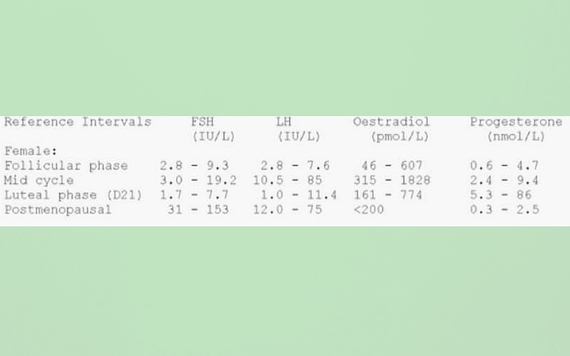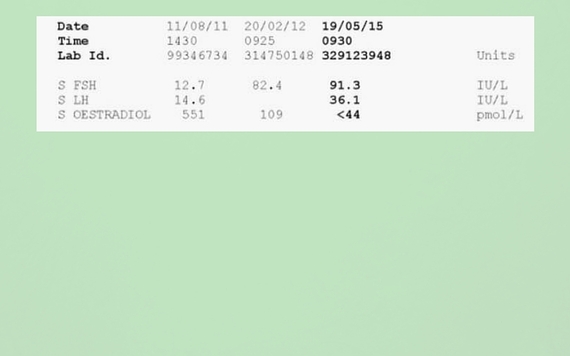Heather was in a frustrating hormonal nightmare for three years.
She lacked energy and was not sleeping well due to her night sweats. She was also gaining weight, despite eating a healthy diet.
Yet, Heather's doctor told her she was not menopausal if she was still having her, mostly erratic, periods. The official diagnosis of menopause would not be made for Heather until she was 365 days without a period. Then she could come back to her doctor and seek assistance.
Many women are suffering silently, just as Heather did. Some think that they are imagining their symptoms.
Others are shunned by their doctors, ridiculed by friends and family. Daily challenges, once met with optimism, can now be very daunting.
There is a genuine reason for Heather's symptoms despite not having reached the menopause. Heather is entering the peri-menopause stage of her life, and that can be more challenging than actual menopause.
One of the most common questions I get asked is:
"Can anyone help with interpreting my blood levels". How do I know if I am entering the menopause or peri-menopause or am I simply tired from overwork?
Here I am going to explain what to look for in your blood test results.
- Do you know where you are in your cycle when your blood tests are taken?
A woman's cycle comes in three phases.
The time leading up to menopause a woman's hormones are still fluctuating between the phases. See the box below for the normal ranges for each phase.
Oestradiol levels below 200 pmol/L can be normal for a woman during the follicular phase. On the other hand it may be a sign that she is commencing peri-menopause.
During the lead up to menopause, referred to as the peri-menopause phase, women may not be experiencing regular cycles and therefore have no idea as to whether they are mid-cycle or in the luteal phase at the time of having their blood tests which can be a hindrance in interpreting blood results.
The menstrual cycle involves more than one hormone. By isolating just one hormone does not give a clear picture of whether you are menopausal or not.
If you look at the levels taken 20/02/12 you will note that the FSH was high (82.4), but the oestradiol (109) was still within range for the follicular phase.
Heather's doctor had relayed to her that her hormones were all normal because her oestradiol levels were within range, if she was in the follicular phase. But what if Heather was having a period every 3 months at this stage. This level could otherwise be interpreted as being low.
Her doctor also failed to acknowledge the rising FSH levels.
Rising FSH levels
When a woman's ovaries decrease the amount of oestrogen and progesterone being produced, the pituitary gland senses this drop and therefore increases its production of FSH. FSH stands for Follicle Stimulating Hormone, hence it is trying to stimulate the ovaries.
Initially there may be a transient increase in the amount of oestrogen being produced but this is short lived and the pituitary gland increases its production of FSH but the ovaries eventually stop responding.
While increased levels of FSH is ignored by the ovaries, it should not be ignored when seen in blood tests as it provides a useful diagnostic tool for doctors when assessing a woman's menopausal status.
Blood tests taken in 2012, showed high FSH. This should have been considered as an early indicator that Heather was in a transitional period.
The peri-menopause phase can be one of hormonal torture for woman, in some instances more so than the actual menopause. This time frame needs to be acknowledged for those women suffering symptoms.
The reason behind this is because during the peri-menopause phase, a woman's hormones can fluctuate from one day to the next, with the delicate relationship between oestrogen and progesterone being a rather strained one.
It is only once a woman reaches menopause that the wild fluctuations actually decrease, bringing more stability to a woman's hormones with a resulting decrease in symptoms experienced.
Heather followed my FREE 5 Day Hormonal Harmoniser challenge and was blown away with the results. She relayed to me that had she known three years ago that she was entering the peri-menopause phase of her life she would have made some of the changes that I recommend in the challenge. She firmly believes that her transition would have been a smoother one and she could have decreased the intensity of her hormonal nightmare.
Julie Dargan is a Nurse, Naturopath (BHSc) and works with women to help them in their peri-menopause transition through health and lifestyle changes. If you would like to read more about menopause and peri-menopause here is a link to her website : It is in the whispers that we are heard!
Julie also has a private Facebook Group allowing an open dialogue between women in a safe and private environment.
Earlier on Huff/Post50:



